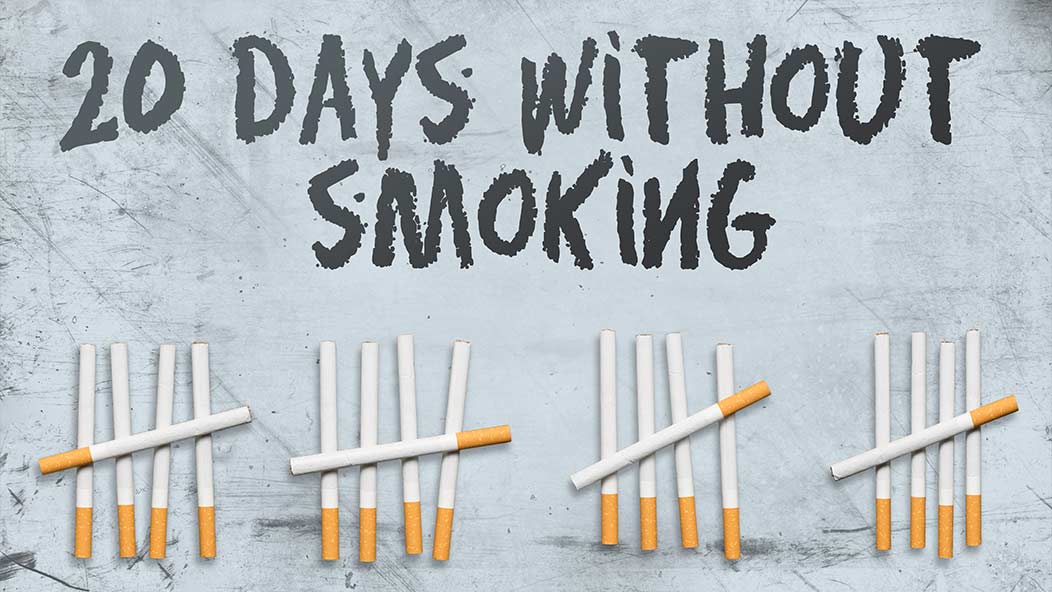Join Our eNewsletter!
Subscribe to our monthly newsletter to receive encouraging advice to help you lead a healthy lifestyle.

Your Guide to Quitting Smoking
It’s widely understood that smoking is a highly unhealthy habit, and according to the Centers for Disease Control and Prevention (CDC), nearly 70% of adult smokers say they want to quit. But while more than half of the 21.5 million smokers in the United States report making an attempt to quit, only 7.5% have successfully done so.
Although tobacco and nicotine dependence make quitting difficult, it is possible. In fact, since 2002, former smokers have outnumbered current smokers. For many people, quitting requires repeated attempts, but starting with a plan can improve your chances of stopping smoking for good.
Step 1: Understand Why You Smoke
Knowing why you feel the need to smoke can make it easier for you to quit. It likely goes without saying that most people smoke because they’re addicted to the nicotine in cigarettes. But why did they start smoking in the first place? And why did they keep smoking to the point of addiction?
Some of the most common reasons, other than addiction, that people give for continuing to smoke are:
- Stress relief
- Comfort
- Bonding – a lot of people start smoking with a friend or group of friends and continue to use it throughout their lives as a way to socialize and bond with others
- Fear of weight gain
- Routine – many people smoke because they’ve gotten used to having a cigarette before, during, or after daily activities
If you’re a smoker, you may relate to one or more of these reasons. Ask yourself honestly why you smoke, and then think of ways you can replace smoking with healthier habits to get the same result. For instance, instead of smoking for stress relief, you could try deep breathing exercises, regular massages, or yoga. Instead of smoking to stay slim, focus on eating well and exercising to be healthy.
Step 2: Know Your ‘Why’
Everyone has a different reason for wanting to quit smoking. They may want to stop before they develop one of the many chronic health issues smoking contributes to. They may want to look and feel better. They may want to quit to be a positive example to their kids. It’s important to determine what your reason – or “why” – is because that’s what will help you to stay motivated and keep going when you face obstacles in your journey.

The CDC’s Quit Guide suggests asking yourself these questions to discover your reason or reasons for wanting to quit:
- What do I dislike about smoking?
- What do I miss out on when I smoke?
- How is smoking affecting my health?
- What will happen to me and my family if I keep smoking?
- How will my life get better when I quit?
Make a list of all of the reasons you want to quit and use affirmative statements. Some examples include:
- I will reduce my chances of developing chronic diseases, including cancer, emphysema, stroke, and heart disease.
- I will be a better role model to my children.
- I will help protect my loved ones from secondhand smoke.
- I will save money and have more to spend on healthier choices.
- I will make myself and my family proud.
Repeat your statements to yourself whenever you’re tempted to smoke. You can also write them down and keep them in a place where you will see them often.

Step 3: Plan To Quit
Now that you know why you smoke and why you want to quit, you can create your “quit plan.” The CDC suggests taking the following actions to make your plan:
- Pick a quit date. Choosing an actual date to quit will help prevent procrastination and excuses. Give some real thought to the date. Put your quit date on your calendar or write it somewhere you’ll see it daily to remind you of your goal.
- Let others know you’re quitting. Not only does telling people about your plan to quit make it more real to you, but it also allows others to support your efforts and help you avoid situations in which you’ll be tempted to smoke.
- Get rid of reminders. The most important smoking reminder to remove from your life is cigarettes. If you still have any, throw them away. Also get rid of your lighters, matches, ashtrays, and anything else that reminds you of smoking.
- Identify your triggers. Write down anything you can think of that prompts you to smoke, whether it’s certain activities, feelings, people, or situations. Next to each trigger, write what you can do to cope with or avoid temptation.
- Cope with withdrawal. Your body adjusting to no longer having nicotine is an unavoidable and often difficult part of quitting, especially if you’ve been smoking for a long time. Ask your doctor about any medications, either over the counter or prescription, that can help you cope with withdrawal symptoms. And remember that every day you stay smokefree, the symptoms fade more. It takes about a month of not using nicotine for the nicotine receptors in your brain to return to normal levels.
- Set up a support system. Your support system is a pivotal part of succeeding, and it doesn’t have to be limited to your friends and family. Smokefree.gov offers a free mobile text messaging service that sends you daily text messages to support you in your quitting journey. It even offers the service for specific groups, such as moms and veterans. There are also “quitlines” that allow you to speak to a smoking counselor, as well as phone apps that provide support and track your progress.
- Reward yourself. Quitting smoking is hard! You should reward yourself every time you hit a milestone, not just when you succeed at quitting altogether. Set your own milestones (24 hours smokefree, one week smokefree, one month smokefree, etc.), and celebrate each one by rewarding yourself. Write your milestones and rewards into your plan so you always have motivation to stay smokefree.
Smokefree.gov offers an online quit plan builder that walks you through creating your plan, provides resources specifically geared toward your answers, and allows you to download the plan.

Step 4: If You Slip, Don’t Stop
It’s extremely common to slip up and smoke a cigarette when you’re trying to quit. Slips do not mean you’ve failed. If you have a moment of weakness, don’t let it discourage you. Turn to your support system, distract yourself with a healthy or fun activity, write in your journal – whatever you can do to get yourself back on track. Just don’t give up!
Step 5: Reap the Benefits
Most of us already know the most obvious health benefits of quitting smoking – decreased risk of heart disease, blood clots, lung disease, emphysema, diabetes, and cancer – but there are many other perks, too. They can include:
- Normalized estrogen levels in women
- Lower risk of erectile dysfunction in men
- Proper wound healing and improved blood flow
- Stronger immune system and fewer illnesses
- Stronger muscles due to increased oxygen in the blood
- Reduced risk of bone fractures now and later in life
- Improved hearing and vision
- Cleaner mouth, better breath, and healthier teeth
- Clearer, healthier, younger-looking skin
If you’re struggling to quit smoking, talk to your Primary Care physician and visit smokefree.gov for more tips and resources to help you in your journey.








